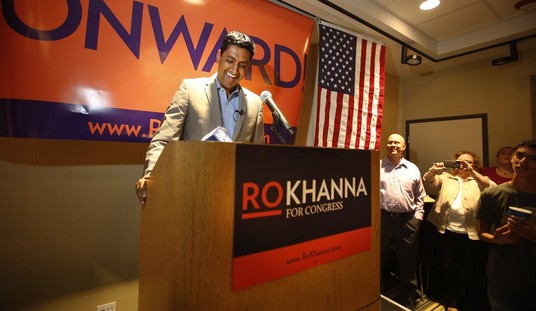I offer this not to encourage complacency, of which there’s already been far too much, but as a purgative after feeding you a horse-sized dose of hopelessness this morning.
John Ioannidis is a respected epidemiologist at Stanford. His specialty is “metascience,” i.e. calling BS on shoddy medical research. The point of this new piece isn’t to declare that the data on coronavirus is shoddy; the point is to declare that we just don’t have enough of it yet to feel confident about how dangerous the disease is. And that matters a lot when you’re implementing policies with massive social repercussions like shutting down the global economy and passing trillion-dollar stimuluses.
At bottom his argument is the same as Dr. Jeremy Faust’s, who I’ve written about before. What if there are a ton more people walking around with asymptomatic COVID-19 than we realize? If there are then the death rate is far lower than we’re estimating. If in fact this virus is less deadly than the flu, do we actually want a coast-to-coast shutdown to contain it?
Projecting the Diamond Princess mortality rate onto the age structure of the U.S. population, the death rate among people infected with Covid-19 would be 0.125%. But since this estimate is based on extremely thin data — there were just seven deaths among the 700 infected passengers and crew — the real death rate could stretch from five times lower (0.025%) to five times higher (0.625%). It is also possible that some of the passengers who were infected might die later, and that tourists may have different frequencies of chronic diseases — a risk factor for worse outcomes with SARS-CoV-2 infection — than the general population. Adding these extra sources of uncertainty, reasonable estimates for the case fatality ratio in the general U.S. population vary from 0.05% to 1%.
That huge range markedly affects how severe the pandemic is and what should be done. A population-wide case fatality rate of 0.05% is lower than seasonal influenza. If that is the true rate, locking down the world with potentially tremendous social and financial consequences may be totally irrational. It’s like an elephant being attacked by a house cat. Frustrated and trying to avoid the cat, the elephant accidentally jumps off a cliff and dies.
Calculating the death rate isn’t just a “denominator problem,” Ioannidis explains. It’s a numerator problem too. Tens of thousands of Americans die every year during flu season of “influenza-like illnesses.” Some of those illnesses are the work of the good ol’ flu and tests prove it. But some are due to other coronaviruses that we already know about. (The common cold is a coronavirus.) And some of those coronaviruses are known to hit older people harder. The estimated number of deaths from influenza-like illnesses each year is 22,000 to 55,000, notes Ioannidis. What if COVID-19 is just a slightly more lethal coronavirus, the sort of bug that would have gotten lumped into the category of “influenza-like illnesses” if we hadn’t misunderstood the death rate and begun panicking over it?
If we assume that case fatality rate among individuals infected by SARS-CoV-2 is 0.3% in the general population — a mid-range guess from my Diamond Princess analysis — and that 1% of the U.S. population gets infected (about 3.3 million people), this would translate to about 10,000 deaths. This sounds like a huge number, but it is buried within the noise of the estimate of deaths from “influenza-like illness.” If we had not known about a new virus out there, and had not checked individuals with PCR tests, the number of total deaths due to “influenza-like illness” would not seem unusual this year. At most, we might have casually noted that flu this season seems to be a bit worse than average. The media coverage would have been less than for an NBA game between the two most indifferent teams.
The only way to have a reliable sense of how infectious and dangerous COVID-19 is, he says, is to test a sample of the population randomly. That idea has been suggested by others too. It’s like taking a poll. Just as you couldn’t get an accurate sense of public opinion about Trump by polling only Democrats or only Republicans, you can’t get an accurate sense of what’s happening with the new coronavirus by testing only the people with symptoms, especially severe symptoms. We can’t test people randomly right now because, er, we lack the tests needed even to test the sick, which is why Ioannidis is leaning so heavily on the Diamond Princess for evidence. That’s as close to a random sample as we can get, and the disease wasn’t all that lethal there. Relatedly, a new Chinese study postulates that for every known case of the disease there are five to 10 people walking around who have it but are undetected, and may be only half as likely to transmit as people with more developed symptoms. There could be many more asymptomatic carriers than we suspect.
All of this matters, says Ioannidis, because we’re using the social equivalent of thermonuclear weapons to try to take this disease out. Massive social distancing. Forced closings of small businesses. A gigantic increase in federal borrowing. These “remedies” will have a social cost all their own. Layoffs. Hungry families. Drug and alcohol abuse. Suicide. “Generational war.” Widespread, grinding despair. And not just here. People are already gaming out whether the coronavirus epidemic in Iran might lead to revolution.
There’s just one wrinkle in Ioannidis’s argument: Italy. Amazingly, the word “Italy” never appears in his piece. If you want to chuck the data from China in the trash because, well, who would be so foolish as to rely heavily on data from China, that’s fine. But Italian hospitals are overwhelmed. Hundreds of older Italians are still dying every day, although rigid isolation measures are helping to flatten the curve. Clearly this virus isn’t business as usual, even if the death rate is lower in fact than we’ve been led to believe. If only one out of a thousand people dies from COVID-19 with proper treatment but one out of every six requires hospitalization to receive that treatment then we have a major crisis regardless, with lots of indirect deaths among people from other causes (e.g., heart disease) because there’s no longer room at the ER for them.
All Ioannidis has to say about this is that flattening the curve via social distancing could actually prolong the meltdown by dragging it out over a longer period, but I’m not sure after reading the piece what he thinks we should do otherwise. Letting the virus spread unchecked when we don’t know with confidence what the death rate and the hospitalization rate are would be the most insanely risky policy gamble of my lifetime. Surely we already have enough data from Europe to believe with some confidence that the virus is highly contagious and sufficiently severe in a large enough number of cases that we need to do something immediately to slow it down. He’s right about random testing; that should be done as soon as we have the capability. But we don’t right now. So what are we supposed to do except err on the side of “this is a once-in-a-lifetime” challenge whatever we can do to protect our hospitals?
I mean, there has to be a middle ground between “we’re all gonna die!” and this:
What a horrible and heartless message for you to share with the younger people who look up to you @VanessaHudgens https://t.co/p0vIekdigP
— Yashar Ali 🐘 (@yashar) March 17, 2020
I’m interested to hear how medical pros respond to Ioannidis’s piece. In the meantime, one more ominous fact about this coronavirus that may set it apart from other coronaviruses: It appears to hit front-line health-care workers unusually hard, even if they’re younger. I assume that has something do with the higher viral load each is absorbing by interacting with multiple patients every day, but if this disease is going to take out doctors and nurses, we’re in much more trouble than we knew.







Join the conversation as a VIP Member